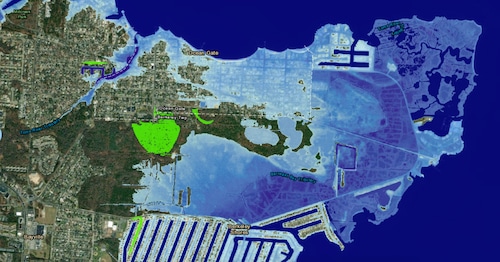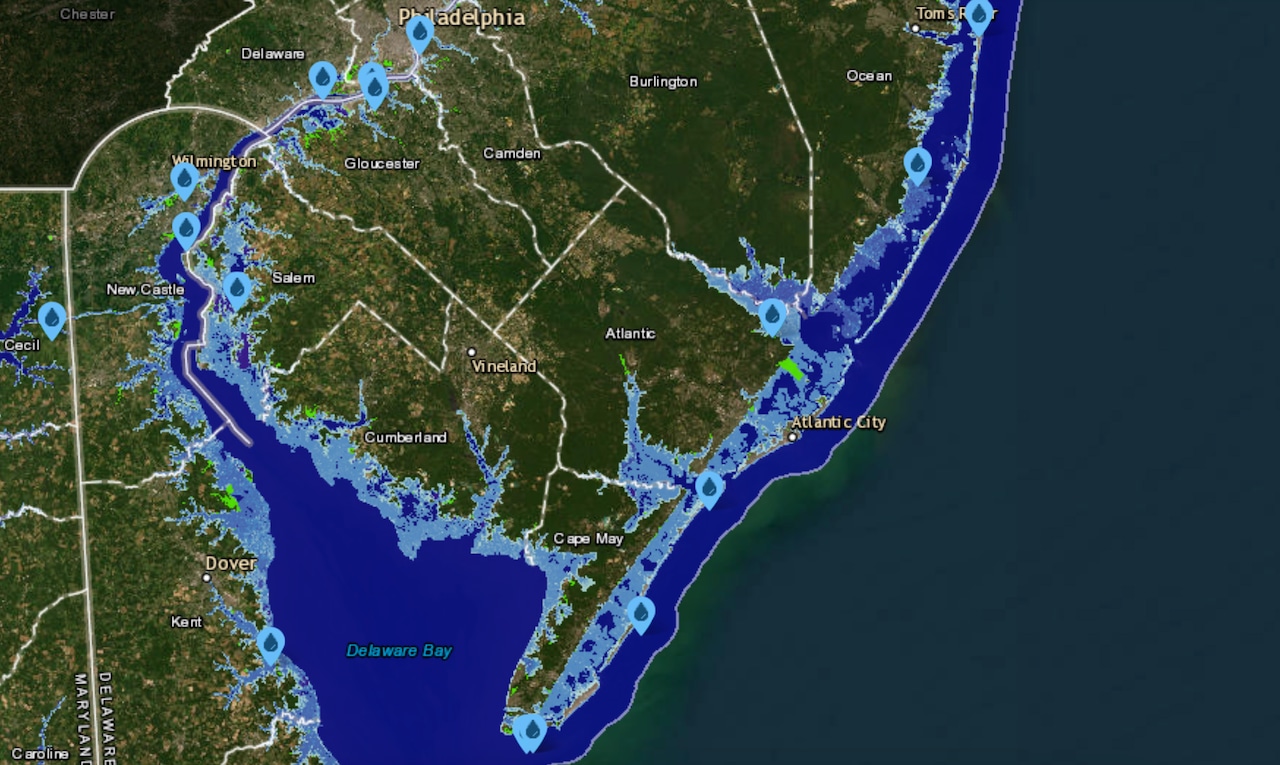For some in New Jersey, sea level rise is never far from the mind.
The National Oceanic and Atmospheric Administration provides readers with an interactive tool to see what future rising temperatures could mean for ice melt and overall rising ocean levels at the Jersey Shore and beyond.
“Increased carbon emissions increase atmospheric and ocean heating, which melts land ice sheets and glaciers and causes thermal expansion of the ocean, leading to coastal sea level rise along most U.S. coasts,” William Sweet, a NOAA oceanographer, told NJ Advance Media on Wednesday.
In 2022, a NOAA report noted that sea levels along the nation’s coasts are increasingly likely to rise at least 2 feet by the end of this century due to human-caused climate change.
Emissions trajectories to date, a NOAA spokesman said this week, predict that between about 2.5 and 3.5 feet of sea level rise is likely by 2100.
The agency’s interactive tool continues to be updated to show the latest scenarios.
The online map from NOAA illustrates what New Jersey can expect, such as in parts of the Jersey Shore that run parallel to the Atlantic Ocean, but also in places inland.
Below is an image of the type of devastation that 2 feet of flooding would bring to places like Tuckerton, Port Republic, Little Egg Harbor Township and Absecon.
NOAA’s interactive map of sea level rise shows how New Jersey could be affected by climate change. Here, the map is set at 2 feet of sea level rise, which experts say could flood the United States coast by the end of this century.National Oceanic and Atmospheric Administration
The newly proposed regulations in New Jersey would require new structures to be built five feet higher than existing flood elevations established by the Federal Emergency Management Agency, FEMA.
A 5-foot rise in sea level would submerge Holly Park, Cedar Beach and much of Ocean Gate, the tool shows. In Toms River, even places some distance from the nearest waterway, such as Camelot and Parkway Manor, would be flooded.
Down on the Jersey shore, towns like Margate, Ventnor and Brigantine will be submerged by rising water on both sides – from small nearby bays and the ocean.
Problems to the north would also be severe, with areas bordering the Hudson River (such as Jersey City, Hoboken, and Weehawken) facing flooding problems as sea levels rise.
Sweet said locally, viewers can use NOAA’s 2050 sea-level rise trajectories and 2100 rise scenarios from the federal sea-level rise report from two years ago “along with maps to better understand which land and infrastructure will become increasingly at risk for episodic flooding and more permanent flooding.

A 5-foot rise in sea level would submerge Holly Park, Cedar Beach and much of Ocean Gate, a NOAA tool shows.National Oceanic and Atmospheric Administration
Housing and floods
Between 1911 and 2019, sea levels in New Jersey have already risen 1.5 feet along the state’s coast — compared to half a foot in global mean sea level, according to experts at Rutgers University.
“We’re going to see more rapid sea-level rise in the future if we continue to (release) greenhouse gas emissions,” Robert Kopp, a climate scientist and professor in Rutgers’ Department of Earth and Planetary Sciences, said Wednesday afternoon for the upcoming challenges.
Kopp said that while reducing those emissions will pay dividends at the end of the century and beyond, remarkable sea-level rise is already expected over the next two decades.
“That means we have to adapt to sea level rise,” he said while discussing the significant development along the state’s coastline. “When we think about things like land use. When we think about things like infrastructure. We need to plan for sea level and climate in the coming decades.
A Rutgers analysis provided to NJ Advance Media also outlined the following about what potential future flooding could mean for renters and homeowners:
- Of the more than 3 million parcels of land in New Jersey as of February 2024, more than 307,000 were in the 100-year floodplain—in other words, those properties that have a 1 in 100 (or 1%) chance each year of being flooded
- This 100-year scenario includes more than 224,345 residential homes at risk (out of more than 2.4 million homes)
- New Jersey land at risk under the 100-year floodplain scenario totals more than $250 billion in true net assessed value — about $156 billion of which is residential homes
NOAA’s Sweet said New Jersey in particular also faces higher-than-average rates of sea-level rise due to factors such as the number of tropical and northeast storms it faces, as well as “land subsidence,” the slow sedimentation or the sudden sinking of the earth’s surface that is associated with the last ice age.
For more information about what sea level rise could mean for your part of New Jersey, check out NOAA’s map at coast.noaa.gov/slr. You can also visit the New Jersey Department of Environmental Protection’s sea level rise information page at https://dep.nj.gov/slr/.



